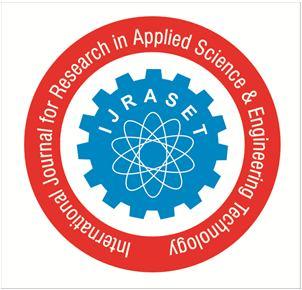
1 minute read
International Journal for Research in Applied Science & Engineering Technology (IJRASET

ISSN: 2321-9653; IC Value: 45.98; SJ Impact Factor: 7.538
Advertisement
Volume 11 Issue III Mar 2023- Available at www.ijraset.com
II. AIM AND OBJECTIVE OF RESEARCH
The multi-leaves spring was studied using finite element techniques, with seven leaves used for heavy industrial vehicles. Analysis is performed on the stress distribution and deflection characteristics in ANSYS 14.0 workbench. Each model is dynamically analyzed for four different materials with the same charge conditions. The purpose of this research is to improve the collection of leaf spring materials. In Ansys, a static analysis is conducted in selected dimensions for this spring simulation and ANSYS14.0 for selected architecture parameters. To reach the main study goal, the obtained findings are compared graphically.
III. REVIEW CRITERIA
This journal uses double-blind review process, which means that both the reviewer (s) and author (s) identities concealed from the reviewers, and vice versa, throughout the review process. All submitted manuscripts are reviewed bythree reviewer one from India and rest two from overseas. There should be proper comments of the reviewers for the purpose of acceptance/ rejection. There should be minimum 01 to 02 week time window for it.
IV. FINITE ELEMENT ANALYSIS
The experimental bridge structure Truss has been studied using ANSYS, a software product combined with commonly used engineering simulations, which provides a full group of products covering the entire spectrum of physics, allowing the use of almost many engineering replicas that are needed by the design process. The software package utilizes its tools position a virtual product by a stringent test process, for example by measuring a beam for a considerable object below completely different loading condition. In a fast, safe way and with a large number of different contact algorithms, the ANSYS can perform advanced engineering analyses, mainly on loading times and non-linear materials. In this research, she investigates under static loading conditions under distinct modeling of the Truss bridge structure.
V. METHODOLOGY OF RESEARCH
The methodology of solution is chosen once the mathematical models are ready. A qualitative or quantitative dimension maybe considered for the mathematical formulation of the problem. Mathematical formulations of the question are tested in qualitative analysis without clear resolution in qualitative analyses. Quantitative analytical methods, on the other hand, may be classified as theoretical, physical and computational methods. FEM research is usually performed in order to load the leaf spring statically.
VI. MATERIAL SELECTION FOR LEAF SPRING
Structural steel is the main material for the leaf spring. This article has contrasted the result of structural steel, nickel Material Specifications



